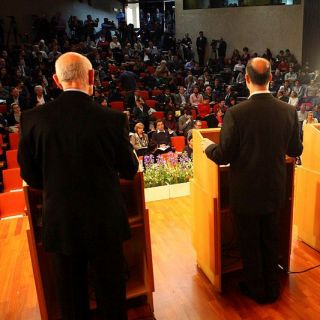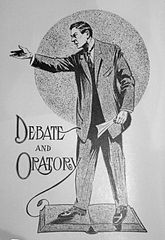Laughter
Laughing Matters During Presidential Primary Debates
Applause and laughter play an important role in how we evaluate candidates.
Posted August 5, 2015

In light of the first debate of this year's presidential election, I invited my friend, colleague, and non-verbal behavior expert, Patrick A. Stewart from the University of Arkansas, to talk about some of his research on presidential debates.
Take it away, Patrick....
"Laughing Matters During Presidential Primary Debates"
by Patrick A. Stewart, University of Arkansas, Fayetteville
As we enter the 2016 presidential primary debate season, two things stand out. The first is that there are an awful lot of candidates, with twenty-two and counting. The second is that, despite the broad selection of qualified candidates, only one truly stands out: reality show tycoon Donald J. Trump.
As a result of these two factors, the Republican Party debates with its seventeen candidates have a certain circus flavor. FOX News, hosts of the first debate, tried to address this by splitting up the first debate into ten prime time contenders and leaving the remainder in a “not ready for prime time” slot that will be televised during most people’s commute. This decision is based upon who has the highest average public polling numbers in the days just prior to the debates.
Arguably, the first tier of GOP candidates are more “celebrity” candidates than those stuck at the “kiddie table” prior to prime time, with the most outspoken individuals obtaining the most attention from the media and public, and as a result, higher levels of support.
This leaves the more serious, staid, and sensitive candidates in the background. As a result, the early “drive-time” debate might appear to be a typical presidential debate, with policy positions and value statements backed by years of experience, whereas the “prime time” debate might look more like the mutant hybrid love child of the “Bachelorette,” “Survivor” and (of course) “The Apprentice” (although “The Donald” won’t be able to fire his fellow candidates).
The question is: just how will we, the American Public, sift through all these candidates to choose (hire?) our next president?
Although the media televising these debates will influence who we think our president ought to be by how much speaking time they give each candidate, the camera angles they use, and the post-debate coverage they provide, ultimately the viewer decides. Whether at home, or in the studio audience, the public decides who they like and trust. This is why debates are so popular – they put the candidates in a more natural setting that allows us to see who they are, not what their constructed personas are.

And it isn’t just how the candidates present themselves that matters. My research suggests that how the audience in the studio responds to each of the candidates may matter even more. Specifically, applause and laughter play an important role in how we the viewers at home evaluate candidates.
Audience applause matters – but not as much as we might think. In my research, I found that applause was not related to electoral status or speaking time. This is because applause is easy – you don’t have to do much to applaud - you just put your hands together. It is the absence of applause that indicates we dislike or are apathetic towards a candidate. At the national stage, this is rather unexpected due to the fact that when a candidate is a part of a national debate, we recognize this as an impressive accomplishment.
On the other hand, laughter is much harder to attain than applause. This makes it a better indicator of audience support. To get laughter from your audience, you have to connect with them emotionally. While front-runners do not have to worry about getting attention, second tier candidates have to work harder to get the audience to support them. In my study I found that these lower status candidates will attempt to induce audience laughter to gain attention, and most importantly, be liked by the potential supporters.
To be humorous enough to induce laughter from supporters and potential supporters is a strong indicator of a successful connection with the voters by these also-rans, especially despite the comparative lack of speaking time. This was seen with insurgent GOP candidates Newt Gingrich in 2012, and Mike Huckabee in 2008, both of whom were able to vault themselves over the other candidates. Humor also proves to be a powerful tool for front-running candidates who want to connect with their supporters, as was the case with John McCain and both Barack Obama and Hillary Clinton in 2008. Not only were they front-runners, I found they also elicited more than their fair share of laughter during the primary debates.
Having a good sense of humor – in other words, being able to make your audience laugh – is the hallmark of charisma. This charisma allows for underdogs to push their way past the “chosen” front-runners. Presidents Ronald Reagan and Bill Clinton arguably had no chance, at least according to party insiders, but their ability to connect with the public led to their ascension to the highest office in the land. Likewise, the “chosen” front-runners, including, on the GOP side, Rudy Giuliani in 2008 and Mitt Romney in both 2008 and 2012, as well as Al Gore for the Democratic Party just did not seem to connect with the voters on the GOP side. In a very real sense, they just weren’t likable enough.
For clips from the 2008 election referenced above, please visit Debatable Humor.




